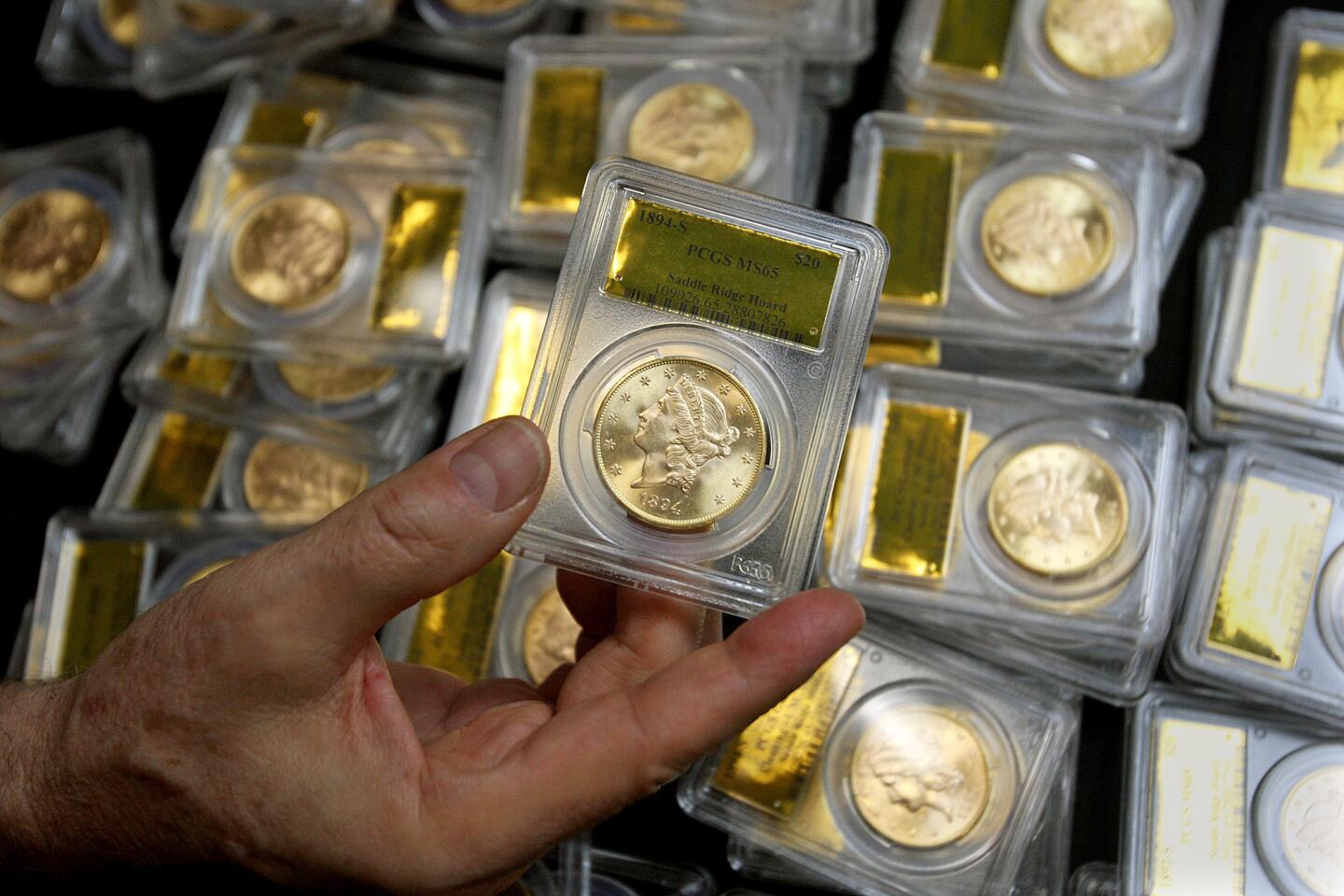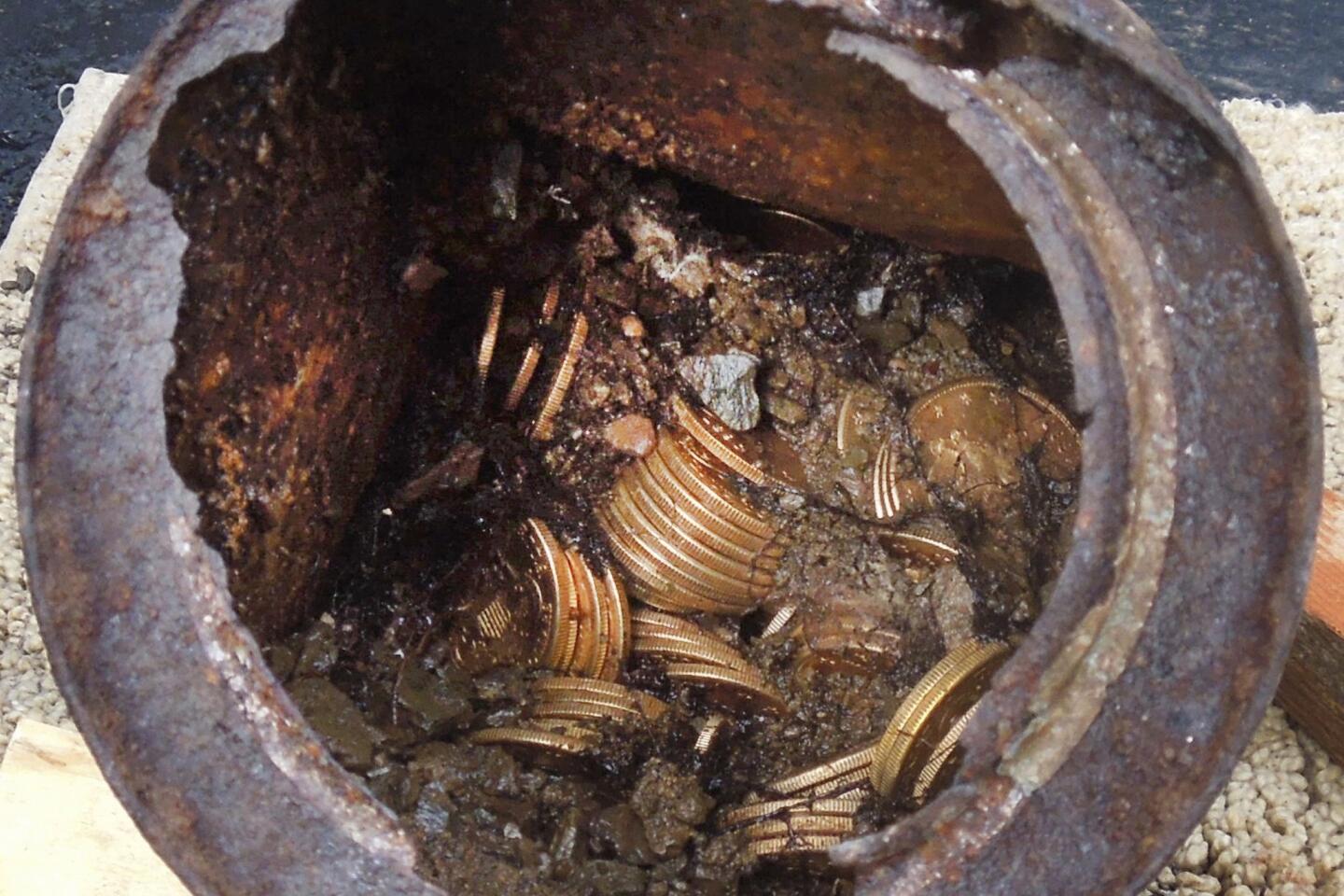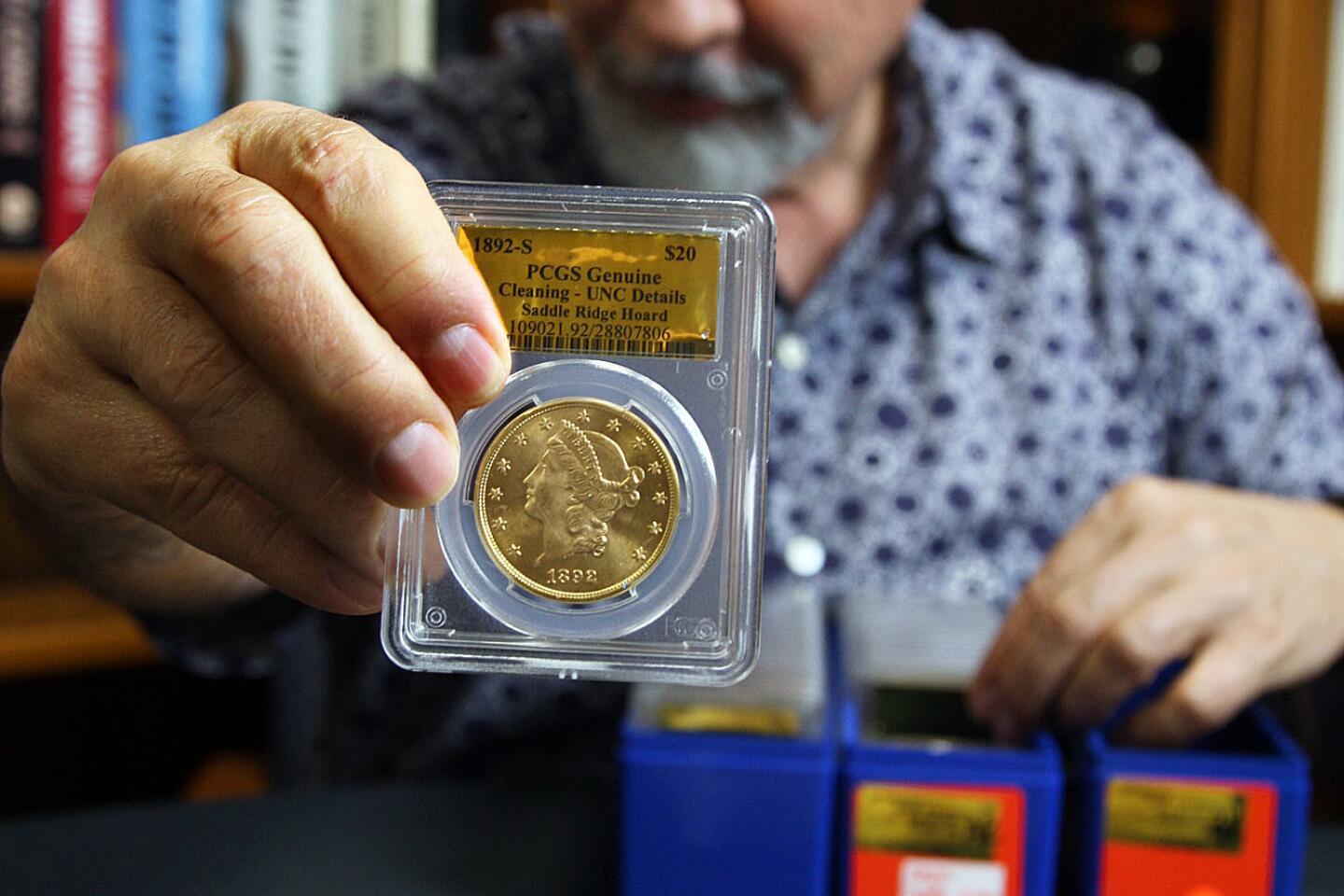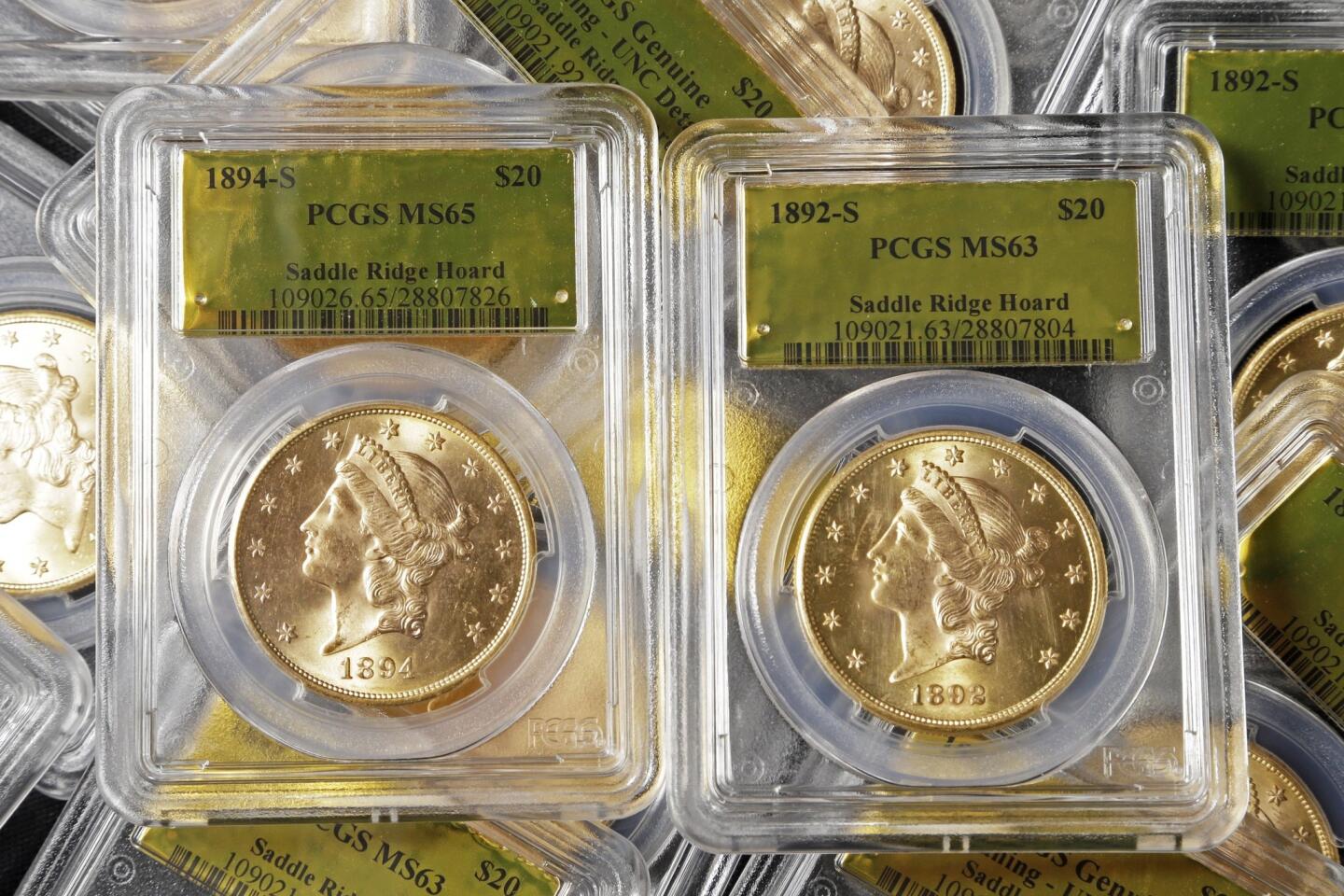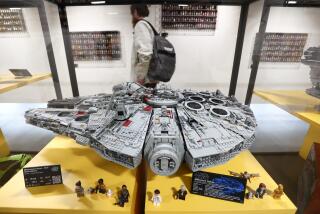California gold coins: Theories abound on treasure’s origin
The news of a Northern California couple’s discovery of more than 1,400 gold coins hidden on their property has experts, history buffs and regular folks speculating on the treasure’s origin.
Though officials said it is unlikely the coins were stolen in a turn-of-the-century theft at the U.S. Mint in San Francisco, some wonder if the cache could be one of many believed buried by the Knights of the Golden Circle.
The secretive, subversive Confederate group is thought to have hidden millions in ill-gotten gold across a dozen states to finance a second Civil War.
PHOTOS: California couple discovers cache of gold coins
The coins very well could be a fortune buried by a wealthy businessman, but the time period, markers near the cache and manner in which the coins were buried fit the mold of the KGC, said Warren Getler, a former Wall Street Journal reporter who coauthored “Rebel Gold,” a book about the group.
Getler and coauthor Bob Brewer argue in the book the KGC existed for many decades after the Civil War and continued to bury and protect underground gold and silver caches.
“The whole point was to keep money buried underground for a certain time in history and to go back and get it,” he said.
In recent decades, buried gold and silver has been found by treasure hunters who follow markers to caches stored in Mason jars, cans and underground vaults, he said.
“It’s not easy to find this stuff, there’s a code,” he said. “It’s an underground mini Fort Knox network, and it’s there.”
Others speculated the coins were some of those that went missing from the San Francisco Mint at the turn of the century. Chief Clerk Walter Dimmick was convicted of stealing $30,000 -- six bags of double eagle gold coins, 250 $20 coins in each -- and served time in San Quentin prison for what was later called the Dimmick Defalcation. The coins were never recovered.
But there is no connection between the recent discovery and the stolen coins, said U.S. Mint spokesman Adam Stump. Officials looked into the matter when they heard of the discovery last week, and will not take any action, he said.
“We’ve done our research, and we can’t find any link,” he said.
Kagin’s Inc., which evaluated the hoard and is representing the couple who found it, did extensive research to determine whether the coins were ill-gotten, said David McCarthy, senior numismatist for the firm.
Despite hearing from quite a few people, Kagin’s has not received any credible claims to the coins and does not expect to, he said.
The cache discovered last year contains a mix of coins with 72 distinct date and mint mark combinations, he said. The 1,427 coins, most of them $20 pieces, are dated between 1847 and 1894.
The Northern California couple, identified only as John and Mary by Kagin’s, had walked the path on their gold country property for years before they spotted the edge of a rusty can peeking out of the moss in February 2013. When the lid cracked off, they found dirt-encrusted coins, some in better condition than those on display in museums.
“I looked around over my shoulder to see if someone was looking at me — I had the idea of someone on horseback in my head. It’s impossible to describe really, the strange reality of that moment,” John said in an interview transcript.
The Saddle Ridge Hoard, named for the space on their property, may be the most valuable cache ever found in North America, with an estimated value of more than $10 million. If you melted the coins, the gold alone would be worth $2 million, said David Hall, co-founder of Professional Coin Grading Services in Newport Beach, who recently authenticated them.
Thirteen of the coins are the finest of their kind. One “miraculous coin,” an 1866 $20 piece made in San Francisco and missing “In God We Trust,” could bring $1 million on its own, Hall said. When the motto was added to the coin in 1866, some were still minted without the phrase, he said.
Had the couple attempted to clean the delicate surface of the piece, they could have reduced the value to $7,000 or $8,000 in under a minute, McCarthy said.
Most of the hoard will be sold on Amazon.com in late May or early June to allow a broader swath of the public to access them, McCarthy said. The couple, who will donate some of the profit to charity, said the find will allow them to keep their property.
Twitter: @Sam_Schaefer
More to Read
Start your day right
Sign up for Essential California for news, features and recommendations from the L.A. Times and beyond in your inbox six days a week.
You may occasionally receive promotional content from the Los Angeles Times.
